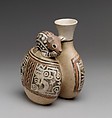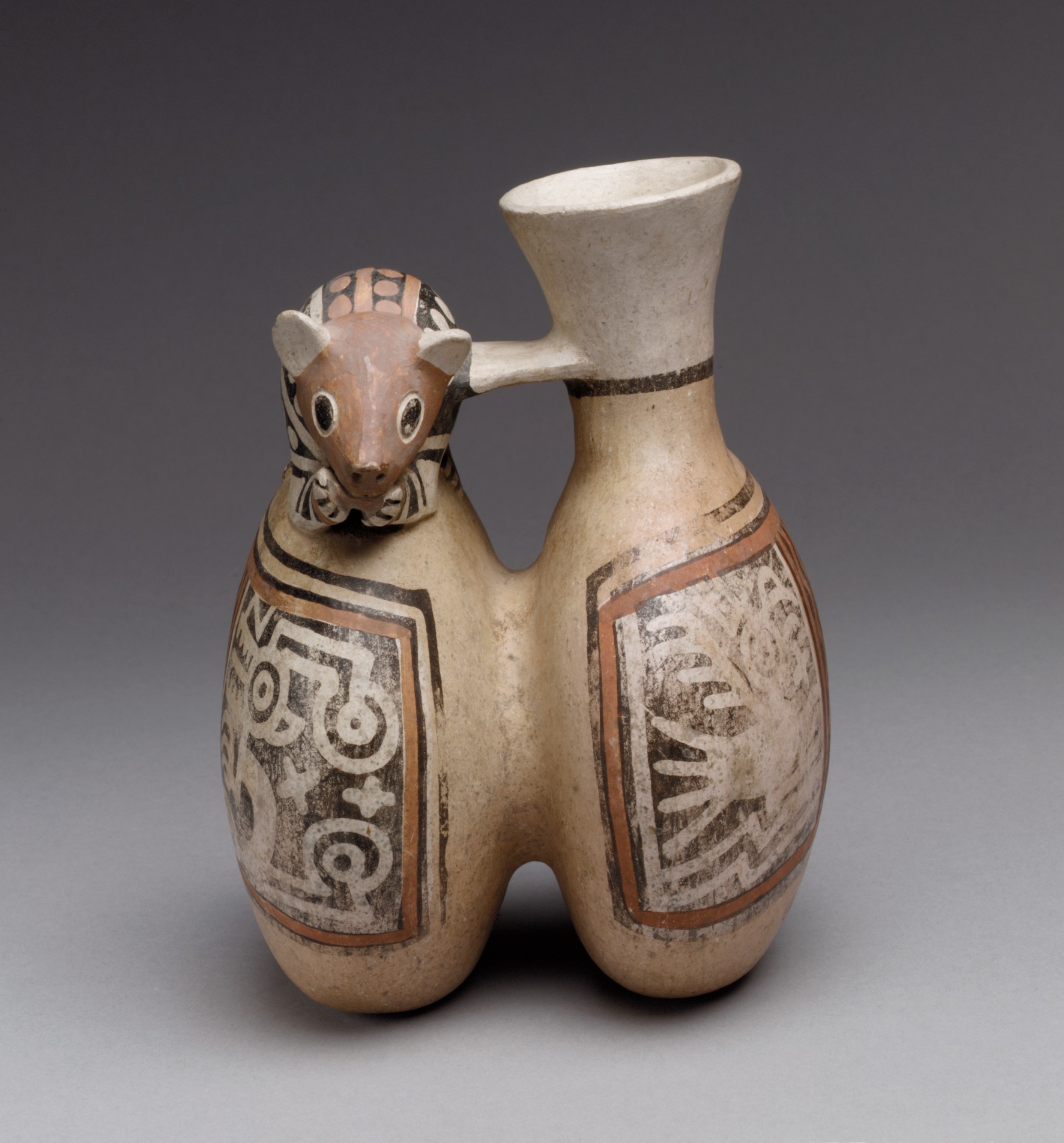Double-chambered bottle with mouse
Not on view
Contemporary with the Moche peoples on the coast, those of Recuay were in the highlands around the Callejón de Huaylas in the north-central Andes. They flourished from about 1200 B.C. to 800 A.D., producing distinctive ceramics and stone sculptures decorated with images of rulers and supernatural creatures apparently related to Recuay cosmology. One of the best known of these images is the so-called moon animal or moon monster, a foxlike or feline animal with a long, toothy snout and head crest. The creature is frequently depicted on fine Recuay ceramics. Often made of white kaolin-like clay and decorated by resist, or negative, patterns, as is this example, Recuay ceramics exhibit quite engaging imagery. The moon animal appears twice on each chamber depicted in profile, with big round eyes, large clawed paws, and a curled tail. From the top of its head extends a curved appendage. One of the chambers has a flared spout, the other is topped by a naturalistically modeled rodent, probably a mouse. Resist painting was widely used throughout the Andes, but it is exceptionally elaborate on Recuay examples. It is often further enhanced with red slip paint, as here.
Due to rights restrictions, this image cannot be enlarged, viewed at full screen, or downloaded.
This artwork is meant to be viewed from right to left. Scroll left to view more.



